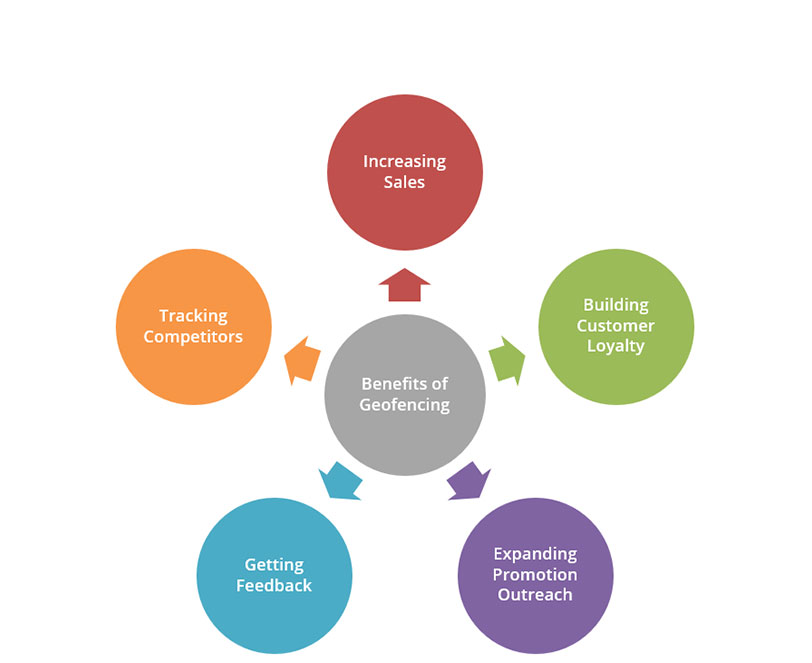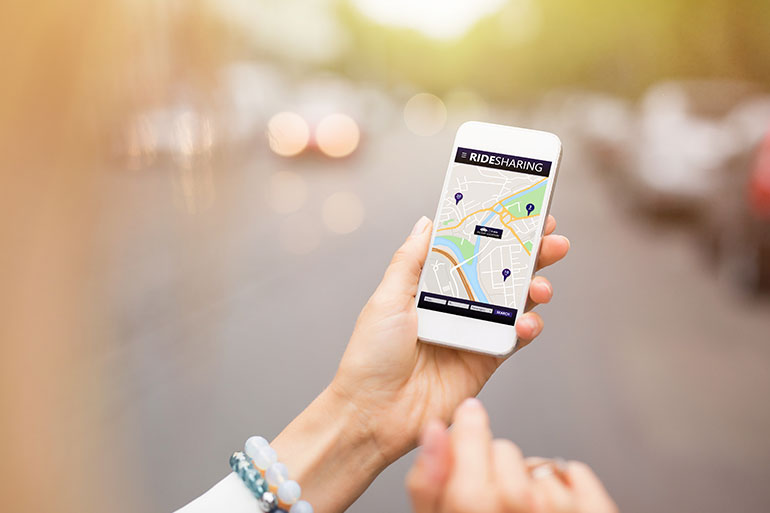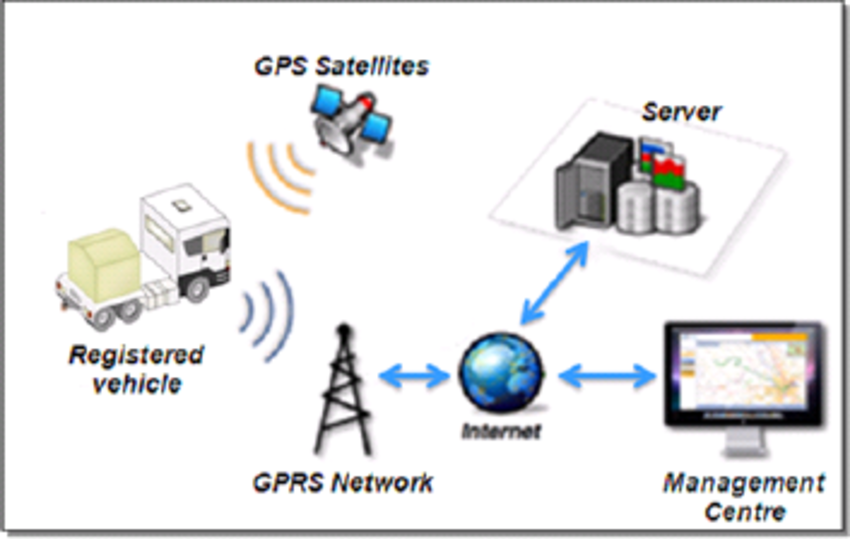GEO Fencing
Putting location to work
Geofencing is a service that triggers an action when a device enters a set location. Coupons, notifications, engagement features, security alerts - businesses are finding creative ways to make use of these virtual boundaries.
Common Geofencing Applications- Social networking
- Marketing
- Audience engagement
- Smart appliances
- Human resources
- Telematics
- Security
Features
Benefits of Geofencing
Increasing Sales
Geofencing can help bring customers from door to shopping aisles by sending customized invites when a person is near the store. These invites make sure that interested customers are pulled to your stores to achieve higher conversions.
Building Customer Loyalty
Customers appreciate the attention paid to them by companies. Geofencing applications can improve the customer-company relationship by helping firms know the needs of a customer before she approaches the business. \
Expanding Promotion Outreach
Sending out promotions to an enormously large mailing list qualifies as spam. Instead, identifying the users who are likely to take advantage of a promotional offer and then sending out targeted campaigns will bring out genuine customers.
Getting Feedback
Feedbacks are the final, albeit essential part of a sale. They help businesses improve over time with inputs from the user base. Feedback forms can be delivered to users after exiting a store, using geofencing. Different forms can be sent depending on whether the user bought something or not.
Tracking Competitors
While this may not come intuitively as something that can be done, geofencing has potential to track your competitors to your advantage. Companies can geofence the stores of your competitors on the map and then check for any of your customers visiting the competitors store.
Audience engagement
Geofencing marketing also helps to increases audience engagement. With Snapchat, geofencing encourages your audience to interact with your filter and share it with friends.You encourage your audience to post photos with the filter and share it with their friends.
Frequently Asked Questions
What is geofencing?
Geofencing is a process of using a geofence to target mobile users. Marketers use this technology to collect information about and target their customers as they enter, leave or stay in specific areas, known as geofences.
What is a geofence?
What is geofencing used for?
On average, a mobile app loses 96% of its users within a year of its initial download. Keeping users engaged is difficult , due to the overload of commercial messages they receive, users filter out the noise. They only respond to what's really relevant to their current mood and setting. Geofencing can provide a lot of insights about user's context and surroundings, which can help marketers adapt their communications accordingly.
What is an example of geofencing?
Geofencing can be used in many different ways. Here are some examples of how marketers in various industries already get creative with it:
Retail: Sending promotional messages as shoppers pass by a store to drive visits.
Automotive: Retargeting users that have visited a car dealership (yours or competitor's).
Coupons: Proving the ROI of coupons using location data to track store visits initiated by coupons.
Airline: Upselling flyers with fast-track services as they walk in the airport.
Mobile payments: Reminding users of places where they can pay as they visit them.
Hospitality: Capturing feedback shortly after visitors step out of the hotel.
Travel: Enriching user profiles with travelling history to supercharge future targeting.
Dining reviews: Suggesting a list of popular dishes to a guest who visits a particular restaurant.
Coffee chain: Giving discounts to returning customers to build loyalty.
Online store: Geo-conquesting competitors locations with deals to lure customers away.
What location technology is used for geofencing?
The general functioning of geofencing is that it uses location services to detect a user's device within the predefined zone , the geofence , in order to trigger a notification or track visits. Now, which location services are used to do this can vary depending on the provider. It can use:
- Cellular
- Wifi
- GPS
How does geofencing compare with beacons and geotargeting?
Geofencing, geotargeting and beacons are all used for location based marketing. Different providers choose to rely on either one or several of these technologies.
| Geotargeting | Beacons | Geofencing | |
|---|---|---|---|
| Location Technology | IP-address | Bluetooth | Cellular/Wifi |
| Target Range | Large (state, zip code) | Small (store aisle, bus stop) | Medium to large (store, neighborhood) |
| Real-Time Targeting | No | Yes | Yes |
| Best For | Browser marketing | Mobile & app marketing | Mobile & app marketing |
| Location Data Collection | No | Yes | Yes |
| Hardware and Maintenance | No | Yes | No |





